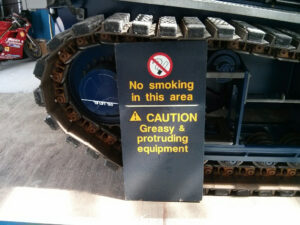Welcome back! The years are disappearing under our wheels like an ice lolly in the sun.
So I guess that at this stage in my life, I’ve long since stopped drinking alcohol, but am still on the caffeine, occasionally.
That is an ecstatic cat, and so I’m glad to see that this tweet picked up 5 likes and a retweet.
Such a grumpy curmudgeon that day.
ON the phone! “ON” the phone! Get it? Get it? Ahahahahahahah!
Having figured out, about ten years after the rest of the internet, that adorable cat photos are the key to getting lots of likes, I’m really going for it now.
Of course, nowadays everyone is online all the time, so how do you know who to talk to? Back then, you’d sign in to IM, and if someone’s name was on the list, then that was an invitation to talk. There’s no invitation element nowadays, and I’m like a vampire – I need to be invited.
Somebody out there liked this.
I think that this might be my first use of the “B” word on Twitter.
I’m not sure what happened here – I think I saw one of those “don’t forget Mother’s Day this year!” posters and panicked, and forgot to check the date. Thankfully I recovered from this faux pas with impeccable grace, by purchasing an identical card and sending it to her again for the actual Mother’s Day. And then the same card again for her birthday, later in the year. I was pretty pleased with that.
Ah, I guess 2019 was the year when I started being annoyed by the word “guys” then.
You’re reading this in Jarvis’ voice now, aren’t you? Alright. 8 likes, but zero retweets, which seems unforgiveable.
So by this time I’m already very deep into my alcohol-free beer explorations, yet tweets like this make me think that I must have been still drinking alcoholic beer occasionally.
Yeah, I’m clearly not teetotal.
I normally post quite a lot of tweets on Eurovision night, lots of throwaway remarks about the various acts. This year, I only posted two – one about the intermission act (Madonna, who, back in 2019, still looked recognisably like Madonna) and one about the scoring. I’ve included both in here because they seem to have some substance.
I’ve always been pissed off by people using microblogging services to post long-form content, and I always will be.
Oooh, I’m on a plane! I see the Aer Lingus logo, that probably means Belfast.

30 May 2019
One solitary like. Maybe I’ll be fully appreciated after my death.
They implemented this. I seem to have a very good knack of making feature requests over Twitter that then get put into production.
So much ridiculous behaviour from that cat, she was a cutie.
This, unfortunately, is one of those ideas that I had that I didn’t end up actually trying myself. Though now I’ve been reminded of it, maybe I’ll give it a go some day.
To be honest, I wouldn’t want to be compared to any of the other characters either, so I’ll take it on the chin.
You should try it, it’s great fun.

4 August 2019
Half a dozen likes, but I was really fishing for a retweet for CRT, which sadly did not manifest.
the hogs
that were in
the yard
and which
you were probably
saving
for 3-5 minutes
Forgive me
they were numerous
so feral
and so quick6 August 2019
Combining the contemporary feral hogs meme with the previous year’s plums in the icebox, I netted a cool 5 retweets and 11 likes. This might be the highlight of my twitting career. We will never reach these dizzying heights again.
Yeah, archery was a thing for a while in 2019. Karen thought me and Bernard should have a thing that we do together, so she applied a small amount of pressure for us to join a local group. Bernard lost interest very quickly. I kept going for a while, but it could only sustain me for so long.
It’s a very nice keyboard, I am still using it now.
I thought this was pretty funny (and still do) but the rest of the world apparently disagrees.
Now obviously it’s a story about a time-travelling adulterer, so in a moral sense it might not be your cup of tea, but I did find that it was funny and well-written. That being said, our rewatch did run out of steam before we got to the very end, so maybe not all of the seasons have kept as well as the first one or two.
I actually wrote quite a few Brexit-related tweets this year. Look at me, getting all political.
And then wait a bit if your name is Bob.
Obviously I’m not some thicko who would get confused by it. I’m not confused. Just disappointed.
Woken up at 5:30 on Christmas Day by the boy. Not with an excited “Dad! Dad! Santa’s been!” but with a world-weary “Dad. Maisy’s been sick on my bedroom floor and I need help cleaning it up.”
She gives the worst presents, she really does.25 December 2019
She’s lovely, but a little bit barfy.
Oh the cat is barfing and molting,
And the oven is quite revolting,
We’re going to clean it today,
Let us spray, let us spray, let us spray.
Me: “and everyone is too polite to t…”
Bernard: “Yoink!”26 December 2019
You snooze, you lose.
You’ll be pleased to know that I totally fulfilled this one. Big time.
Let’s pretend that was the last tweet of the year. Technically there were a couple more after that, but ssssshhhhh.
Early 2020 is going to be a rollercoaster. I would say more but don’t want to risk spoilers.














































